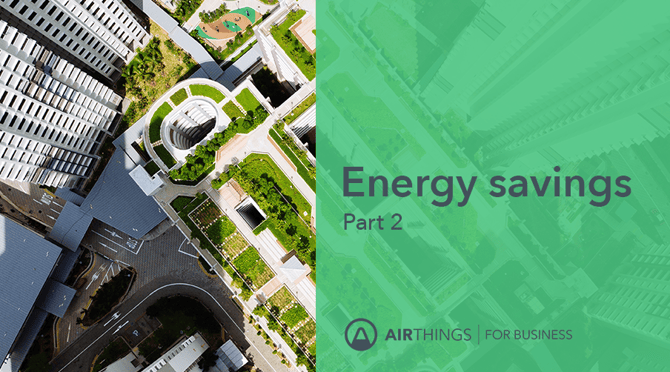Welcome to the first installment of this 3-part series covering the key questions around energy savings. If you’re looking to save the planet and save energy costs, a new approach is needed.
There are many costs to operating a business. Energy is a significant one, accounting for up to 32% of a firm’s total expenditure depending on the industry.[1] This number is likely to increase as global gas prices continue to soar.[2] Meanwhile, in 2021, prices for electricity rose to 10.66 cents per kilowatt-hour in the US (the highest in recent history).[3] And of course, it is becoming more and more important to control our carbon emissions, meet sustainability targets, and limit the dangers of climate change.
Keeping up with all these tasks at once requires a radically new approach. This article shares why it’s time for businesses to rethink their relationship with energy—along with tips on what you can do to improve your energy efficiency.
What’s the problem with buildings and energy efficiency?
A startling fact that businesses may not know about is how energy-inefficient most buildings are. In Europe alone, more than 220 million existing buildings (that’s over 75% of building stock) waste energy.[4] What’s more, many of them aren’t prepared for ongoing and future changes to our climate, like extreme weather changes and an increasingly warmer planet.
Globally, buildings are responsible for 40% of global energy consumption and 33% of greenhouse gas emissions.[5] Why?
-How-businesses-make-buildings-more-energy-efficient-INSERT.jpg?width=1200&name=AS-B2B(Feb%202022)-How-businesses-make-buildings-more-energy-efficient-INSERT.jpg)
There are several key reasons. The main one simply has to do with age – a lot of commercial buildings were built decades ago, and weren’t designed with sustainability in mind. What’s more, some buildings are exempt from having to comply with local energy code requirements because of their historic status.[6] This means they’re not required to operate sustainably, but there’s more to this. Because they haven’t made incremental changes to keep up with evolving energy standards in the past, the process of retrofitting them today would be very complicated, time-consuming, and expensive. For this reason, they continue to leave a large negative impact on the environment (and businesses’ bottom lines!).
You may have already noticed that some of the old buildings being used today aren’t suited for the modern climate. When fossil fuels were cheaper and more readily available, the trend for buildings was to have big windows, high ceilings, and large rooms flowing into each other. However, these design features contribute to excessive heat loss, making the boiler run longer than necessary. This, in combination with the widespread use of air conditioners and inefficient insulation materials, causes energy bills to rise.
Another related problem is a lack of proper ventilation. Many older buildings have leaky windows and walls, which brings up the issue of air permeability. Cold air enters the building through tiny gaps. This can lead to draughts, cold spots, and condensation (which can degrade the structure of the building and weaken the insulation further).
You may wonder then, why do we not simply build new, more energy-efficient buildings? There are a few reasons, find out more in our next article now!

Sources:
[1] https://assets.publishing.service.gov.uk/government/uploads/system/uploads/attachment_data/file/739699/180718_Business_Energy_Statistical_Summary_-_final_version.pdf
[2] www.iea.org/commentaries/what-is-behind-soaring-energy-prices-and-what-happens-next
[3] www.statista.com/statistics/183700/us-average-retail-electricity-price-since-1990/
[4] www.weforum.org/agenda/2021/02/why-the-buildings-of-the-future-are-key-to-an-efficient-energy-ecosystem/
[5] www.weforum.org/agenda/2021/02/why-the-buildings-of-the-future-are-key-to-an-efficient-energy-ecosystem/
[6] https://news.climate.columbia.edu/2022/01/18/it-may-be-time-to-reconsider-energy-efficiency-exemptions-for-historic-buildings/
 Most popular
Most popular
 NEW
NEW




 Radon
Radon
 Radon
Radon


.webp)

-How-businesses-make-buildings-more-energy-efficient-INSERT.jpg?width=1200&name=AS-B2B(Feb%202022)-How-businesses-make-buildings-more-energy-efficient-INSERT.jpg)
